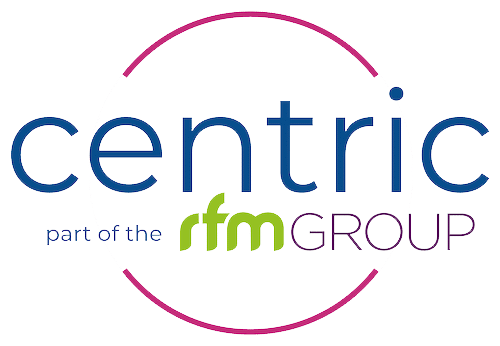Technology plays a significant role in modern office fit-outs, helping businesses to create efficient, connected, and flexible work environments.

Business and technology concept. Smart office. GUI (Graphical User Interface).
7 Technologies in a SMART office
Here are some ways in which technology can be incorporated into an office fit-out:
- Smart lighting: Smart lighting systems can be controlled remotely and can be programmed to adjust to the natural light in a room. This can help improve energy efficiency and create a more pleasant work environment.
- Automatic doors and windows: Automatic doors and windows can be controlled remotely and can help improve energy efficiency by regulating the temperature of a space. They can also be convenient for employees and visitors.
- Video conferencing systems: Video conferencing systems can help reduce the need for in-person meetings and can be a great way to connect with colleagues and clients remotely.
- Virtual reality: Virtual reality can be used for training and simulations, and can help reduce the need for physical space.
- Wireless connectivity: Wireless connectivity is essential for modern offices. Incorporating a strong and reliable wireless network can help improve productivity and connectivity.
- Automatic temperature control: Automatic temperature control systems can help regulate the temperature of a space and can improve energy efficiency.
- Smart appliances: Smart appliances, such as coffee makers and printers, can be controlled remotely and can help improve efficiency and convenience.
Add Technology to Your Office
In conclusion, technology plays a significant role in modern office fit-outs. By incorporating features such as smart lighting, automatic doors and windows, video conferencing systems, virtual reality, wireless connectivity, automatic temperature control, and smart appliances, it is possible to create a modern and efficient work environment.
FAQs Technology in Modern Office Fit-Outs
Here are some frequently asked questions about the use of technology in modern office fit-outs:
-
How does technology play a role in modern office fit-outs?
Technology plays a significant role in modern office fit-outs, as it is used to improve the efficiency and productivity of the workplace, as well as to enhance the overall user experience. This may include the installation of advanced audio-visual systems, collaboration technologies, and smart building systems, as well as the integration of technology into the design and layout of the office space.
-
What are some examples of technology that may be incorporated into an office fit-out?
Some examples of technology that may be incorporated into an office fit-out include:
- Audio-visual systems, such as video conferencing equipment and interactive displays
- Collaboration technologies, such as whiteboards and digital collaboration platforms
- Smart building systems, such as automated lighting and temperature control systems
- Wireless networking and connectivity solutions
- Mobile devices and other portable technology
-
How can technology be used to enhance the user experience in an office fit-out?
There are a number of ways that technology can be used to enhance the user experience in an office fit-out, including:
- Providing convenient and efficient access to information and resources
- Enabling seamless collaboration and communication between team members
- Enhancing comfort and well-being through the use of smart building systems
- Allowing for flexible and adaptable workspaces that can be easily reconfigured to meet changing needs
By carefully integrating technology into the design and layout of the office space, it is possible to create a modern and user-friendly workspace that meets the needs of employees and stakeholders.
-
What are some considerations when planning for technology in an office fit-out?
There are a number of considerations to keep in mind when planning for technology in an office fit-out, including:
- Identifying the specific technology needs and requirements of the business
- Ensuring that the technology is compatible with existing systems and infrastructure
- Ensuring that the technology is user-friendly and easy to use
- Allocating sufficient budget and resources for the implementation and maintenance of the technology
- Ensuring that the technology is scalable and can accommodate future growth and expansion
By carefully evaluating these considerations, it is possible to effectively plan for technology in an office fit-out and ensure that it meets the needs of the business.

